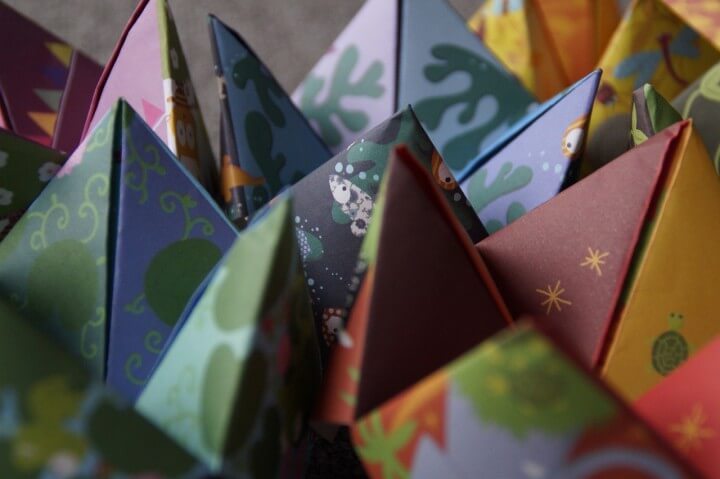
Origami paper is ideal for all of your origami projects, especially if you are a beginner. Origami paper is thinner than traditional printing paper, making it easier to fold and manipulate, additionally, it is usually colored on one side. Although this single-sided coloring enhances the aesthetic appeal of the origami shape that you are making, it also helps you make the figure itself.
Many origami shapes must be turned from front to back or right side up then down several times during the process so keeping track of both sides of the shape, especially when both sides are identical, which is frequently the case, can be very difficult. The origami folder is able to track their folds with greater ease using origami paper which is colored on one side. Origami paper is also available in a variety of different textures and designs, giving the folder the ability to make creating their figures a more tactile experience. Going one step further in terms of design and color, If you prefer both sides of your paper colored, there is origami paper with complimentary colors on either side of the paper. For example, if you were to choose paper that is red on one side with a complimentary shade of red or a design on the flip side, you would be able to keep track of which side of the figure you are working on without the distraction of ordinary white of the paper showing through.
Usually people trying origami for the first time either won’t have origami paper on hand, as most people who aren’t origami hobbyists don’t, or won’t be willing to go to a specialty paper store to buy it. Given that situation, which, more often than not is actually the case, there are other choices available. Ordinary printing paper is the next best choice. Obviously because it’s much more common, it is less expensive; origami paper costs about $7.00 for 55 sheets of perfectly square paper in an assortment of colors, where a ream, or 500 sheets, of copy paper is usually about $3.95. If you are using ordinary copy paper, just make sure that, before starting any project, you cut the paper to the exact square shape necessary for origami. While you can use colored paper, avoid cardstock or anything heavier than a 22 pound paper as these types of paper do not hold a fold or a crease as well as regular paper. In addition, heavier papers are not as pliable making using them for origami, whose shapes require manipulation, nearly impossible.
If you want to get a bit more creative, try working with an origami material like magazine pages or newspaper. Here again, remember to cut the paper to be an exact square, especially if you are making origami shapes meant for beginners. If you want try some origami shapes that are a bit more daring, consider using something like a dollar bill to create modular, also known as multi-piece, origami. While you can experiment with other materials such as tin foil, wax paper or tissue paper, realize that these odd materials may simply not be conducive to making origami with ease.